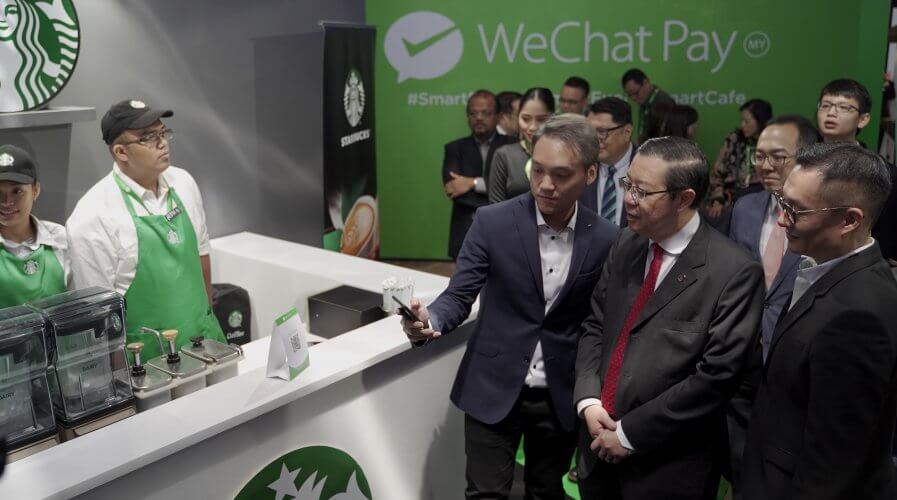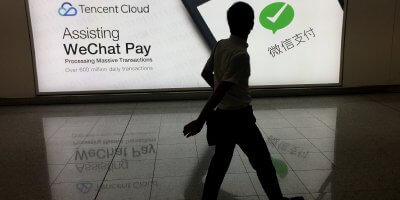
WeChat Pay works seamlessly for merchants as it only requires the display of a QR code. Source: WeChat Pay Malaysia
How is WeChat bringing its e-wallet to Malaysia’s crowded marketplace?
MALAYSIA tops the chart for the highest social media penetration ranking in the world with 25 million users.
The country is also amongst the highest percentage of internet users who use their phone to pay for goods or services.
So, it is a sound business move for Tencent-owned WeChat Pay to begin its global expansion in Malaysia.
“Malaysia is one of the standout emerging markets that has quickly adopted to mobile payments,” said Tencent International Business Group VP Poshu Yeung.
At the WeChat Pay Malaysia launch event, he reiterated the app company’s mission to help boost the Malaysian digital economy.
WeChat began as a messaging app in China in 2011. Now, it is a billion-user all-in-one app that enables scheduling, transit booking, ride-hailing, and making payments.
As WeChat puts together all one’s digital lifestyle needs, it is ideal for merchants to leverage on this all-rounding platform.
Yeung envisions the mission to be a success “by introducing local users and businesses with a simple, secure and convenient mobile payment experience.”
What’s in it for business users?
For businesses, WeChat Pay works seamlessly as it only requires the display of a QR code. Payees will then only need to scan it and punch in the payment PIN on their mobile device.
WeChat Pay Malaysia was introduced last August. Now, the platform accounts for more than 3,500 merchants locally.
Malaysia Finance Minister Lim Guan Eng pointed out that “e-wallets increase payment speed while reducing capital expenditure for payment infrastructure.”
As consumers demand more relevant user experience, it’s only a matter of time merchants need to make the digital shift.
Lim claimed that while e-wallet adoption rate is still low, foreign direct investments trend indicates tremendous growth potentials.
He continued pressing that digitized payments will prepare the economy for more conducive use of big data analytics.
Over time, this will prove to be useful for businesses’ product development and sales projections too.
How will WeChat Pay localize for the Malaysian economy?
WeChat Pay Malaysia CEO Jason Siew shared that the local team aims to expand the merchant base beyond urban setups.
To truly localize the cashless payment infrastructure, WeChat Pay Malaysia is dipping its toes into local staples such as mamak restaurants and pasar malam.
Mamak restaurants are popular get-together spots for people of all walks of life to have a quick meal.
Pasar malam directly translates to ‘night market’ and is a collection of stalls that sell everything from snacks to knick-knacks.
“This will sequentially give users more opportunities to use WeChat Pay Malaysia for easier and more seamless payment transactions,” Siew furthered.
Once deemed as a copycat, China is now leading the pack with all-rounding technologies like this for the business world.
WeChat’s triumph as an app is simple – It makes life easier for all users.
Essentially, that is what technology is for and the tech giant wants the world to know.
READ MORE
- Ethical AI: The renewed importance of safeguarding data and customer privacy in Generative AI applications
- How Japan balances AI-driven opportunities with cybersecurity needs
- Deploying SASE: Benchmarking your approach
- Insurance everywhere all at once: the digital transformation of the APAC insurance industry
- Google parent Alphabet eyes HubSpot: A potential acquisition shaping the future of CRM






